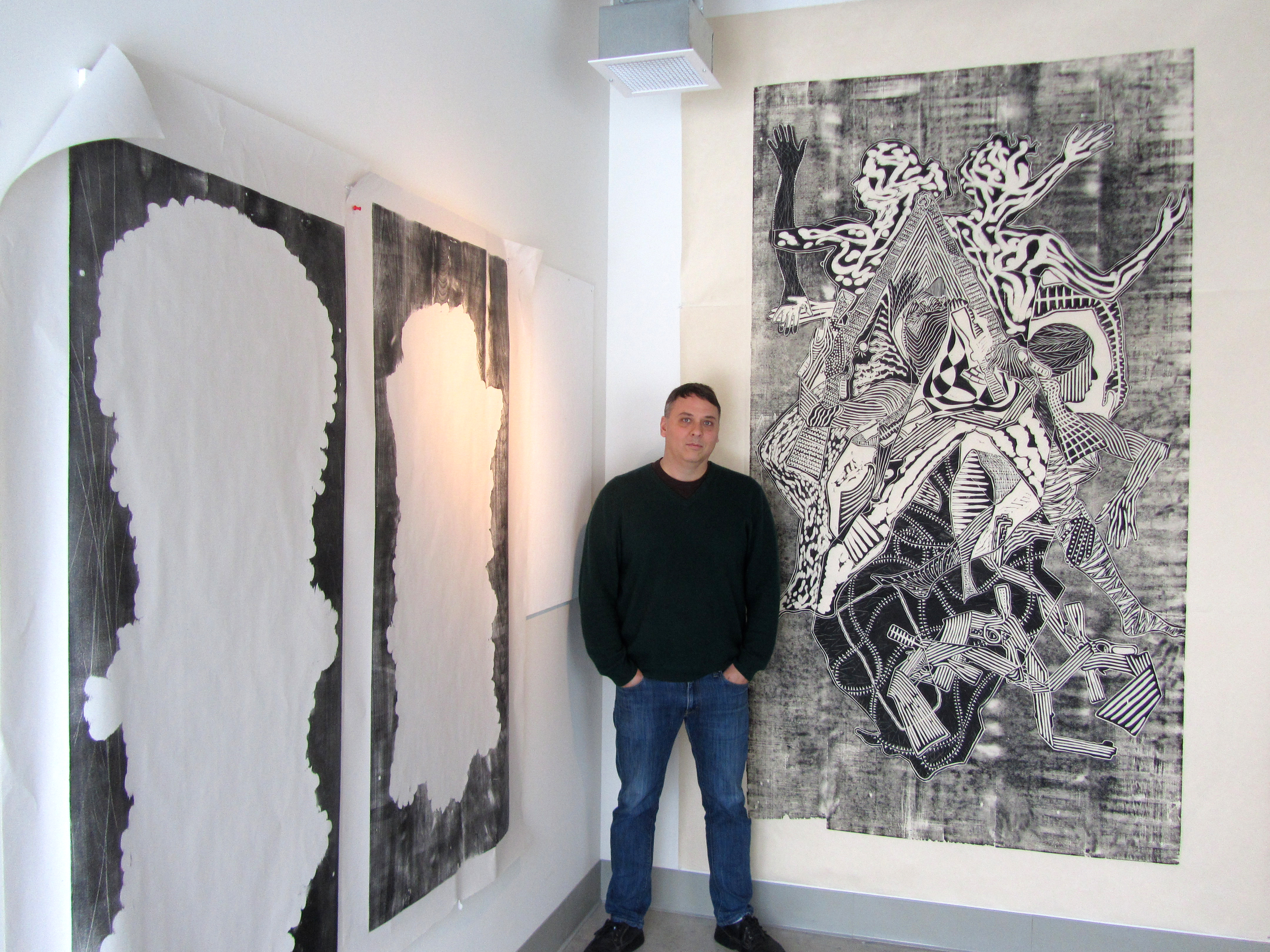
Born 1971, Minneapolis, Minnesota
Aaron Spangler’s themes are rooted in rural America. Spangler takes his inspiration from the 150 acres of woods where he lives in Two Inlets State Forest, near Park Rapids, Minnesota, where he was raised. After moving to New York in 1999, the sculptor and printmaker became known for his darkly calamitous relief carvings , with titles like Government Whore and Mercenary Battalions, that reference the social and political concerns of rural life, which he believes are rarely given voice in the contemporary art world. Spangler discovered wood carving shortly after graduating from the Minneapolis College of Art and Design (BFA, 1993), when he used a sharpened screwdriver to carve a little bas-relief mural on a sculpture he made from found materials. “I got hooked,” he says. “The balance between illusion and real sculptural space was interesting to me.”1 At first he carved bas-reliefs in hard-maple flooring salvaged from a bowling alley, which was not only unyielding but riddled with nails. In 2005, he began using basswood, a softer wood without grain, and augmented the flat chisels he’d been using with more efficient gouges. He also adopted the monochromatic, graphite-touched finish that became his signature.
Gradually, narrative elements gave way to looser, more sculptural forms, as in Mia’s Songbird (2009). Spangler then made wax-crayon rubbings from his carved panels, launching him in yet another direction: smooth abstract sculptures , freestanding, heavily patterned, and more personal. After ten years in New York, Spangler and his wife, chef and author Amy Thielen, a Park Rapids native, moved back to the (now-modernized) house he’d built by hand when he was twenty-four with the help of his grandfather’s swede saw. He is once again a regular at the Two Inlets sawmill, where he worked throwing slabs in his early twenties, got an education about wood, and now sources his basswood. His ten Highpoint woodcuts, completed in 2014, were carved on that basswood. The life-size figure in Waiting in Line (cat. no. 283) is Spangler himself.
Since 1998, Spangler’s work has been included in such exhibitions as “Takashi Murakami’s Superflat Collection: From Shōnaku and Rosanjin to Anselm Kiefer” (2016), Yokohama Museum of Art, Japan; “American Gothic” (2011), with Alison Elizabeth Taylor, Southeastern Center for Contemporary Art, Winston-Salem, North Carolina; “Spectacular of Vernacular” (2011–12), Walker Art Center, Minneapolis, and other venues; and “Heartland” (2008–10), Van Abbemuseum, Eindhoven, Netherlands, and Smart Museum of Art, University of Chicago. Spangler has received grants from the Joan Mitchell Foundation (2014), McKnight Foundation (2009), Minnesota State Arts Board (1998), and Jerome Foundation (1997). Recently his first bronze, Bog Walker (2017), was commissioned by the Walker Art Center for the Minneapolis Sculpture Garden. Spangler also volunteers as adviser and exhibition curator at the Nemeth Art Center in Park Rapids, Minnesota.
—Marla J. Kinney
Notes
Aaron Spangler, phone conversations with the author, May 2020. ↩︎